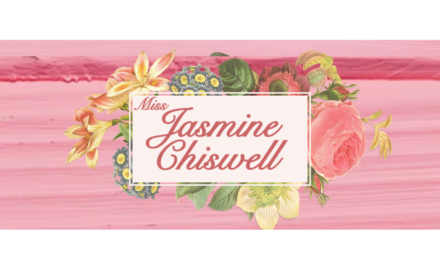
MAY 7, 2021
full tilt
YouTube Model May Kill Business for Short Video Content Creators
What’s the news?
YouTube seems to have pulled back pre-roll ads for short videos.
Why do you say “seems”?
Well, YouTube isn’t explaining anything. We heard about it from TheRealSullyG (832K), who interrupted his regular programming to air his understandable rant YouTube is Killing Our Channels. He calls it “shortpocalypse.”
What’s “shortpocalypse”?
Starting April 12, YouTube seems to have gutted pre-roll advertising for videos between 30 and 119 seconds. (Ads already weren’t possible for videos shorter than 30 seconds.)
In his revelatory video, TheRealSullyG makes the case: On April 9, he published a 35-second video, earning $1.32 per 1K views. By April 12, the revenue dropped to 14 cents. On April 23, it went to three cents.
In contrast, a 2:17 video earned $1.36 per 1K views on its first day, 85 cents on April 12, and $1.57 on April 23. Fluctuations? Yes. Plummeting to bottom out? No.
“Our channels are dying and you (YouTube) are turning a blind eye,” says TheRealSullyG.
What about other YouTubers?
TheRealSullyG shares that many fellow short-video YouTubers have seen similar ad dive bombs.
As Dolan Dark (1.6M) messaged the Real Sully G: “Hoping they have some transparency/explanation/revert in the coming weeks. (O)therwise RIP to short videos as a career.”
The Tilt Talk and Advice
What’s a short-video YouTuber to do?
Since YouTube isn’t talking, monitor your analytics closely to see if they make any changes based on the feedback. At the same time, bring your subscribers to the platforms you control.
How do you move your YouTube subscribers?
Tell them you’re considering a move or expanding from the platform (and explain why). Then, ask them to subscribe to your email list to be notified of any changes. Make that your call to action (CTA) everywhere.
What should you do with your videos?
It’s OK to use the YouTube platform, but don’t rely on YouTube as your primary revenue generator. Identify additional ways to engage your YouTube subscribers off the platform with a delivery vehicle you can control.
Instead of going for ad revenue as you do on YouTube, look for paid content models that you control, like email or other subscription services. Consider offering both free and paid versions. (Use the free versions as marketing tools [i.e., teaser] for the paid subscription.)
Does this matter to content creators who aren’t on YouTube?
Most definitely. We’ve seen it happen in one form or another on Facebook, LinkedIn, Twitter, etc. They control their platforms. You do not.
What’s the takeaway for all content entrepreneurs?
It can be smart to launch your content business on a third-party platform like YouTube where your prospective audience already is. But at the same time, you must have a plan for what to do to move your audience base once you’ve built it.
– Ann Gynn
To learn more about how YouTube may be killing business for short-video content creators and what all content entrepreneurs should be doing, read the longer story.
Content Entrepreneur: The Mom Room
Entrepreneur: Renee Reina
Biz: The Mom Room
Tilt: A frank view of motherhood from a mom (who now has a Ph.D.)
Channels: Website, TikTok (134.K) Instagram (41.7K) Podcast (10K weekly downloads)
Rev Streams: Brand-paid social posts, podcasts sponsorships and ads
Our Favorite Actionable Advice
- You’re not alone: Look at how people respond to your early content to see if the topic you’re interested in resonates with others.
- One platform helps all: Get your audience to expand their relationship with your brand by encouraging them to interact on more than the platform where they found you.
- Don’t flatter yourself: It can be tempting to take every brand deal that comes along (free T-shirt or paid posts). Resist the temptation and evaluate each offer on how it affects your audience and your business.
Some of the Story:
The Mom Room’s Renee Reina makes her voice heard in the saturated mommy blogger and influencer space. As her podcast bio explains: “She isn’t a parenting expert – she’s just a girl with a Ph.D. in psychology who had a baby and decided it was time to stir sh*t up in the mom community.”
And people are responding. Her TikTok boasts 134.7K followers, while her Instagram has 41.7K followers. About 10 months ago, she launched The Mom Room podcast, which now receives over 10K weekly downloads.
Renee learned the business as her audience grew. Brands regularly reached out to ask about her rates. “I had no idea what I should be charging,” she says. After doing the research, she created a media kit with her analytics, services, and rates.
“I turn down many unpaid and paid offers. I also share many things I love without being paid. It comes down to respecting my followers and podcast listeners. I don’t want to be a 24/7 advertisement,” she explains.
Though she generates most of her revenue from sponsored posts, sponsorships and ads are picking up for her podcast. “Right now, I put everything I make from brand deals and sponsorships back into the podcast,” Renee says. And she doesn’t do it alone. The Mom Room team includes a video editor, audio editor, Instagram account manager, and web designer.
– Bonnie Azoulay
All the Story: To learn more about Renee Reina, the content entrepreneur, and The Mom Room, the content business, check out the longer story.
Know a content creator who’s going full tilt? DM us or email ann@thetilt.com.
quick talk
Caught on … Twitter
things to know
Money
-
Day job riddance: Input your desired annual income into the Social Salary Calculator. See how many subscribers or followers – and views – are needed on Instagram, YouTube, or Tiktok to earn that. For example, annual revenue of $50,000 would take 1K YouTube subscribers and 11.9M views. (Lickd)
Our take: Making money through social platforms can seem mysterious. This calculator can be a tool in your business planning. Just make sure you do more research to double-check the numbers. -
Credit for creators: Banking startup Karat created a credit card for content entrepreneurs who earn their revenue online. Instead of credit scores, Karat evaluates applicants by their following, revenue, and business savviness. (TechCrunch)
Our take: It can be good to have a business credit line, but that doesn’t mean you need to use it. Scrutinize every expense carefully and know how long it will take to recoup the investment.
Audiences
-
Work on the relationship: Your audience is like any relationship – unpredictability and inconsistency leads to abandonment. Instead, deliver unique value and experiences every single time they interact with you. (Entrepreneur)
Our take: Do one thing every day to improve your relationship with your audience. (Your audience and your revenue will feel the boost.) -
Inspire your audience: Mel Edwards pays tribute to content entrepreneur Wally Koval’s Accidentally Wes Anderson. She crafts paper creations with a similar aesthetic in what’s been described as “36 Days of Type meets Accidentally Wes Anderson”. She went digital with the creations and posted them to her Instagram account. (Creative Boom)
Our take: How cool is it when your content inspires your audience to create? When that happens, share their work with your audiences, which will help them grow theirs. It’s a pay-it-forward move. (And join Wally at 2 p.m. Tuesday [US EDT] on Clubhouse as part of the Content Inc. book tour chat with The Tilt founder Joe Pulizzi.)
Tech and Tools
-
Sell tickets, not tweets: Ticketed Spaces is coming to Twitter Spaces. The platform announced a new test that will let hosts (Twitter handles with at least 600 followers) sell tickets to their exclusive conversations happening in the new live audio rooms. (Twitter)
Our take: Though the details haven’t been announced, it’s worth watching if Twitter Spaces can become an added revenue stream for your content business. -
TikTok wants to be heard: The short-form video-sharing app created TikTok for Business Club on Clubhouse. At 11 a.m. EDT every Friday in May, they’re hosting a conversation on the audio-only platform. (TikTok)
Our take: You don’t need to build everything on your own. TikTok (65M+) is smart to recognize the Clubhouse format as a great marketing tool for a business audience.
And Finally
-
Killing deal: Kevin Smith will auction his new film, Killroy Was Here, as an NFT. As for what the new owner can do, Kevin says: “You’re a distributor, my friend. Or you can wheel and deal. They can take it to Netflix. Or someone can buy it and just put it on their shelf and never show it again. That’s a possibility.” (USA Today)
Our take: Know what you want when you go to sell your content. If you want people to see your content and to sell it as an NFT, make sure to structure the deal accordingly. -
Pick it up: Readership plummets for mainstream mags, but niche magazines are different. They may be the future when part of a multi-platform strategy. (James Hewes)
Our take: Print magazines as part of your content distribution strategy can attract a different but still relevant audience. It’s more expensive than a digital-only strategy, but do your homework to see if it might be worth the investment risk.
we’re a stan for The Gist
It started as a dinner conversation among three friends. Ellen Hyslop wove a story of the Toronto Maple Leafs’ big win the previous night. Her enthusiastic, conversational, and fresh voice drew in Jacie deHoop and Roslyn McLarty, who weren’t sports fanatics.
As detailed in their about story, Jacie and Roslyn found staying up to date on sports felt like work. Traditional sports media outlets assume readers and viewers already know the backstory.
The trio recognized they could fill the gap and co-founded The Gist, “a sports media startup that creates sports content, experiences, and community that are by women, and for all sports fans.”
Begun as a weekly newsletter, The Gist now publishes three times a week. It also expanded its content to localize for nine cities in the United States and Canada. They also have a weekly podcast The GIST of It in the content mix and a social media presence.
In the last year, its newsletter audience grew 350% and total revenue over 1,000%, according to Jillian Canning in Forbes. Among its strategic partners are the NBA, FanDuel, Wilson, and Adidas.
“The Gist’s traction in the last year demonstrates there’s demand for a new and refreshing voice and format for sports news, and that there’s opportunity for the whole industry to grow when sports content is inclusive, accessible, and equal in its coverage of men’s and women’s sports,” Roslyn McLarty, co-founder of The Gist, told Forbes.
Why we’re a Stan: Finding a new way to tell stories that have been done the same way for over 100 years can seem daunting. But The Gist co-founders didn’t let that stop them. They also focused on doing one thing really well (weekly newsletter) before increasing the frequency or adding content products.
the business of content
Hear what Joe Pulizzi, founder of The Tilt, has to say about an example of multiple creators banding together to develop something amazing, sending their subscriber numbers skyrocketing, in his weekly podcast, Content Inc. (It’s worth the four minutes.)
In the latest This Old Marketing, Robert raves about Adobe (and a big opportunity) while Joe rants about rented land and YouTube.
the tilt team
Your team for this issue: Joe Pulizzi, Ann Gynn, Laura Kozak, Dave Anthony, and Mackenzie Pippin, with an assist from Bonnie Azoulay.
Get more of the Full Tilt stories on TheTilt.com.
Know a content creator who’s going full tilt? DM us or email ann@thetilt.com
Was this email forwarded to you? Get your own sub here.
Copyright ©2021 Tilt Media LLC All rights reserved.
Unsubscribe | Update your profile | 17040 Amber Drive, Cleveland, OH 44111





